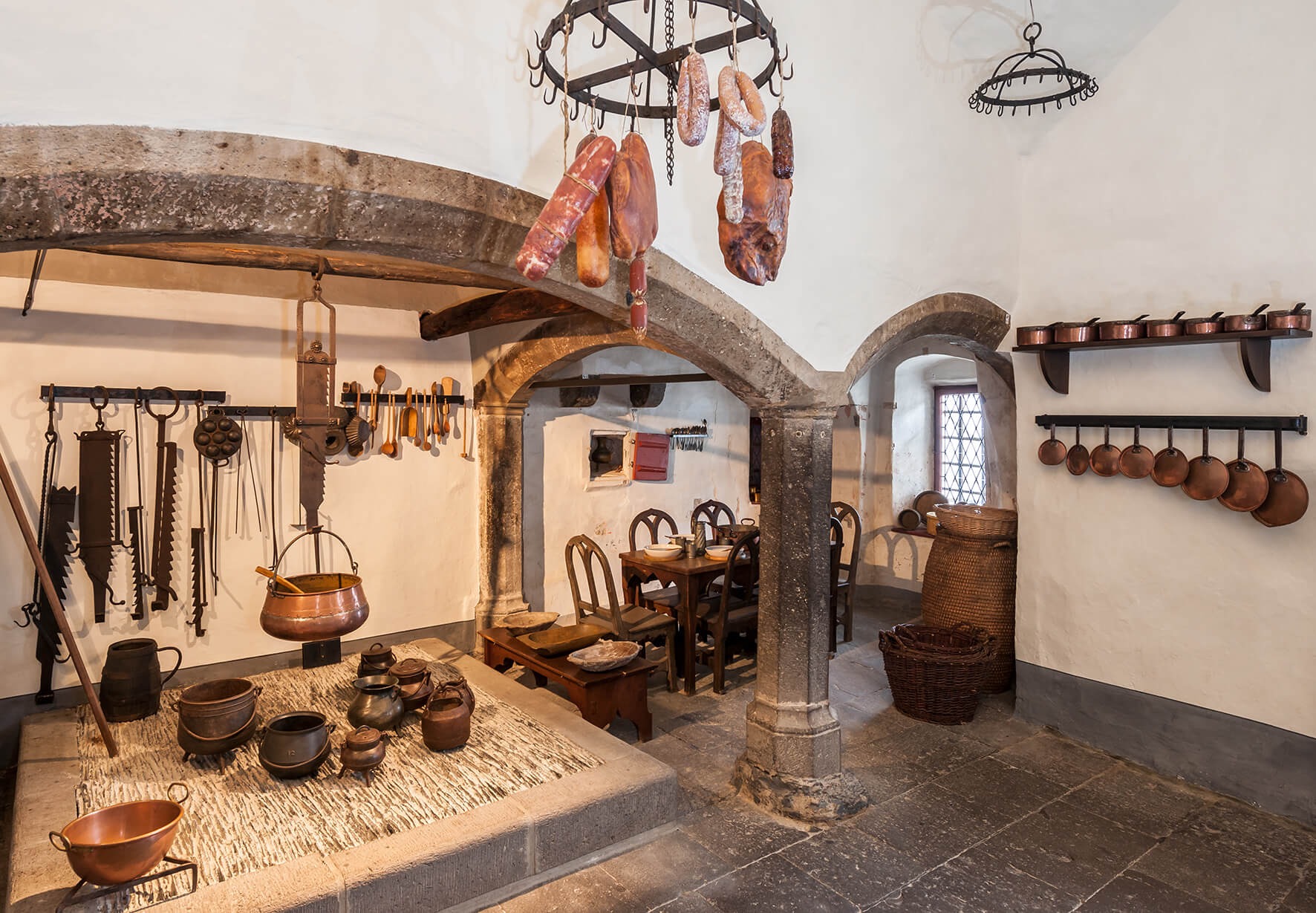Eltz Castle That Has Been Owned By The Same Noble Family For Over 850 Years
Germany’s Burg Eltz is one of the most stunning and well-preserved castles in the world.
This medieval castle is nestled in the hills above the Moselle River between Koblenz and Trier.
It has been owned by the same noble family, the Eltz family, for over 850 years.
Remarkably, it is one of only three castles on the left bank of the Rhine in Rhineland-Palatinate that has never been destroyed by war.

What Makes Eltz Castle Special?
Burg Eltz was built strategically on a 70-meter-high rock spur, giving it a commanding view of the Elzbach Valley.
The river Elzbach, a tributary of the Moselle, wraps around the castle on three sides, creating a natural moat that adds to the fortress’s defenses.
This unique setting not only provided security but also ensured that Burg Eltz would be one of the most picturesque castles in Germany.
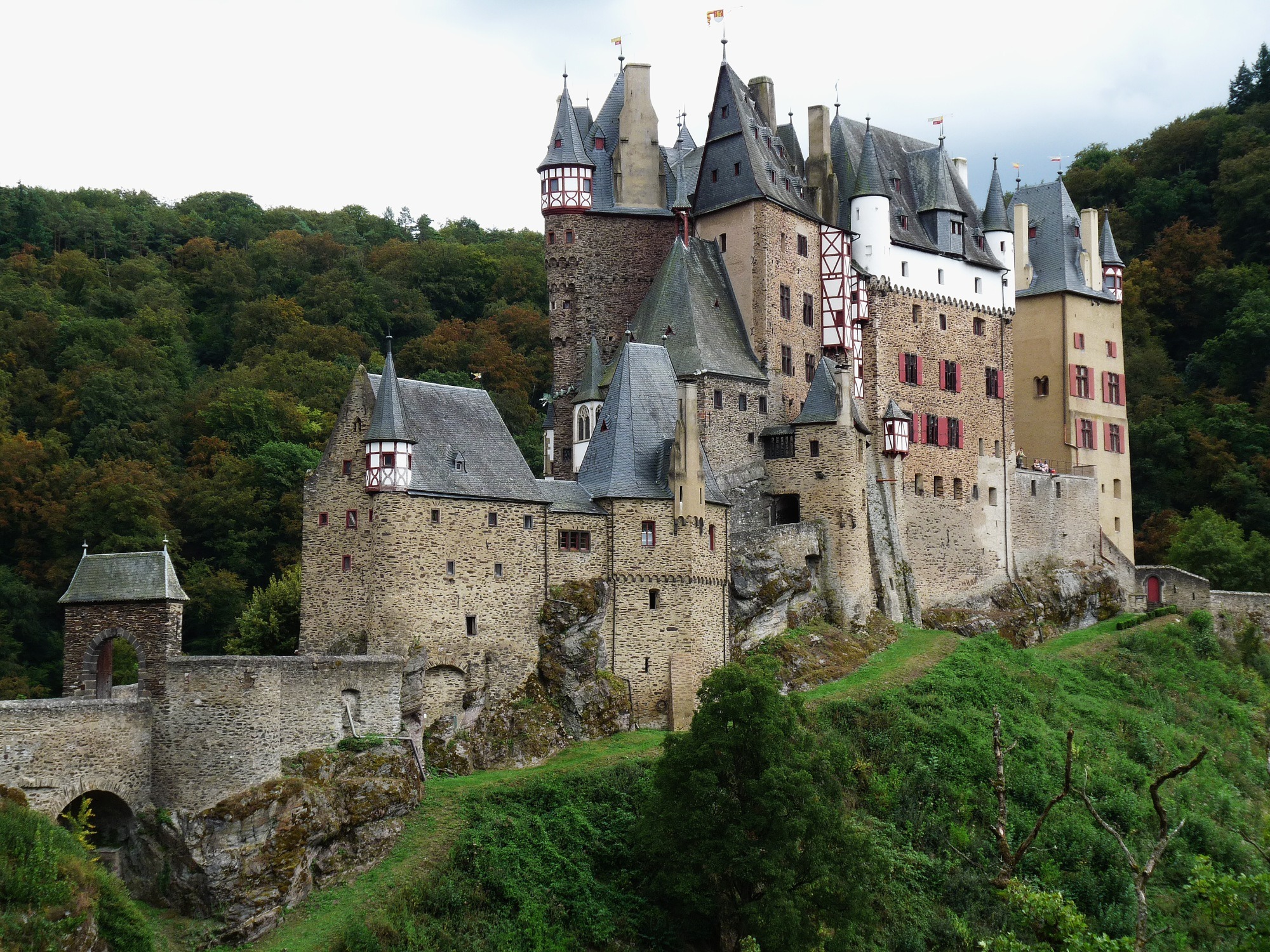
The Castle Was Divided
In 1268, the Eltz family split into three branches, leading to an unusual architectural evolution.
Each branch constructed its own towers and living quarters within the castle walls over the next 400 years.
Despite the division, the families shared common areas such as the courtyard, well, and chapel, creating a harmonious blend of private and communal spaces.
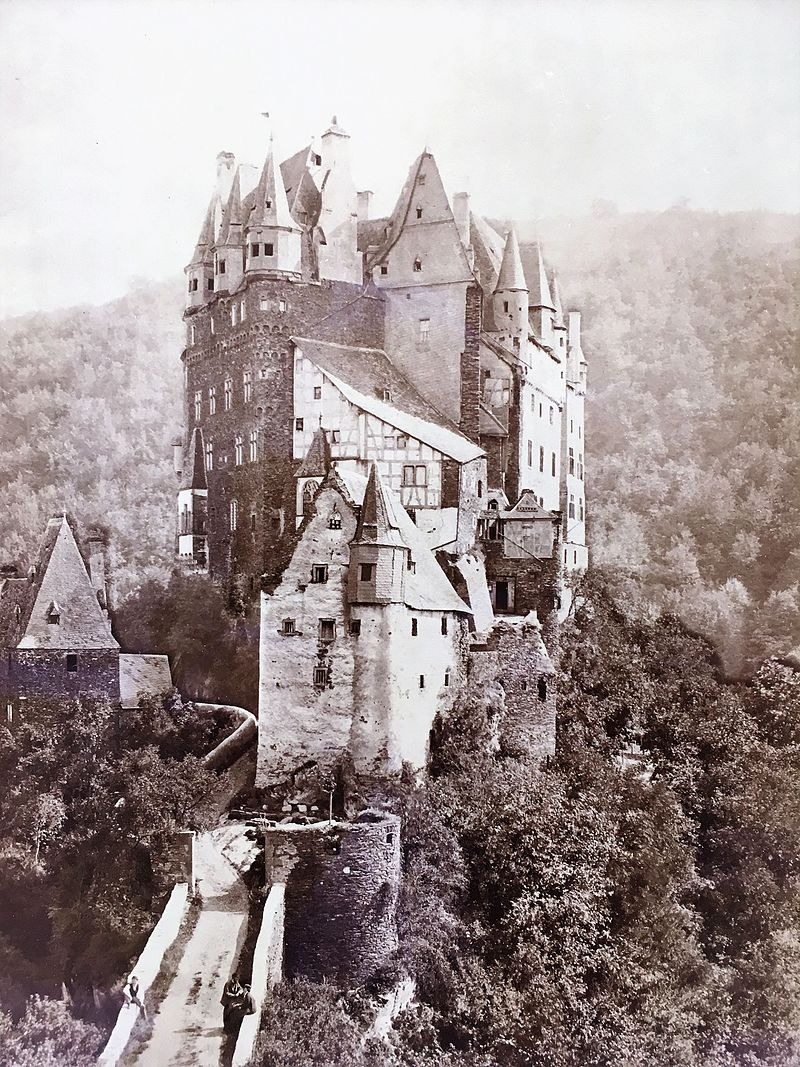
Why Was The House Called The Burg Altz Castle?
Burg Eltz is a Ganerbenburg, meaning a castle was shared by multiple heirs.
This unique setup allowed the Eltz family to live together while maintaining their private spaces.
The Castle Has Survived Through Widespread Destruction
While many castles of its era were embroiled in conflicts and wars, Burg Eltz has seen remarkably little military action.
The most significant event occurred between 1331 and 1336, during the Eltz Feud.
The Elector of Trier, Balduin of Luxembourg, laid siege to the castle in an attempt to subdue the free knights of the Holy Roman Empire, who resisted his authority.
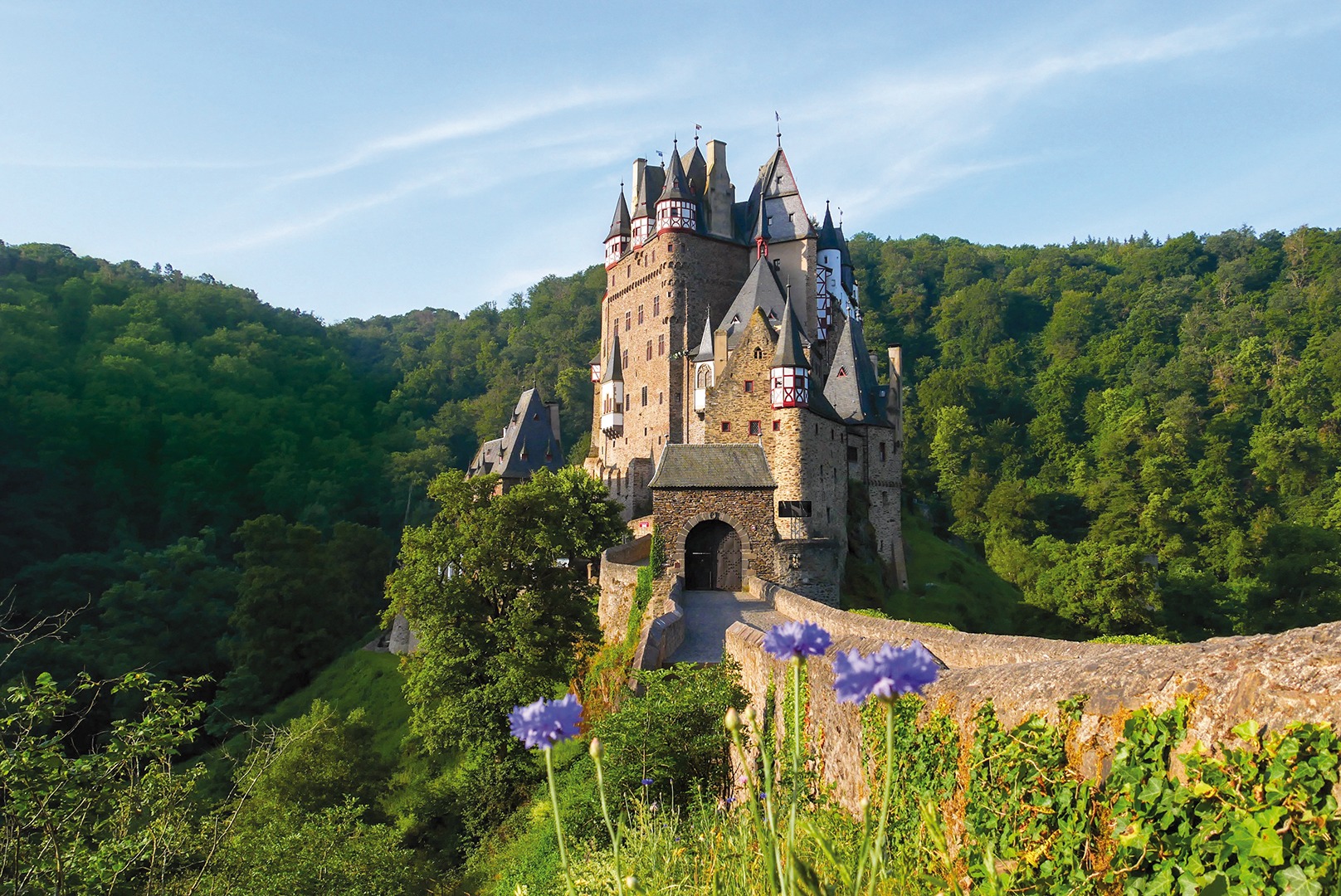
The siege ended with the knights’ submission, and Burg Eltz became a fief of Trier.
Incredibly, Burg Eltz has survived through the centuries, even during times of widespread destruction, such as the Thirty Years’ War and the Palatinate War of Succession.
The Eltz family’s diplomatic skills and strong connections helped preserve the castle when others were destroyed.

Architectural Marvels
The Eltz Castle boasts eight towering structures, some reaching up to 40 meters high, all grouped around a charming inner courtyard.
The oldest part of the castle, the Platteltz, dates back to the 12th century and reflects the Romanesque style of the era.
The Gothic architecture is prominently featured in the Rübenach House, built in the late 15th century, complete with intricately decorated walls and vaulted ceilings.
The Roof and Towers
In 2011, the roof was newly decked with slate from the Moselle region.
From left to right, you can see the roofs of the Rodendorf, Kempenich, and Platteltz sections, with the older Rubenach roof visible in the back when viewed from the east.
The castle’s tall, cone-shaped towers give it a fairy-tale appearance.
These eight towers, some reaching 40 meters (131 feet) high, were built for defense.
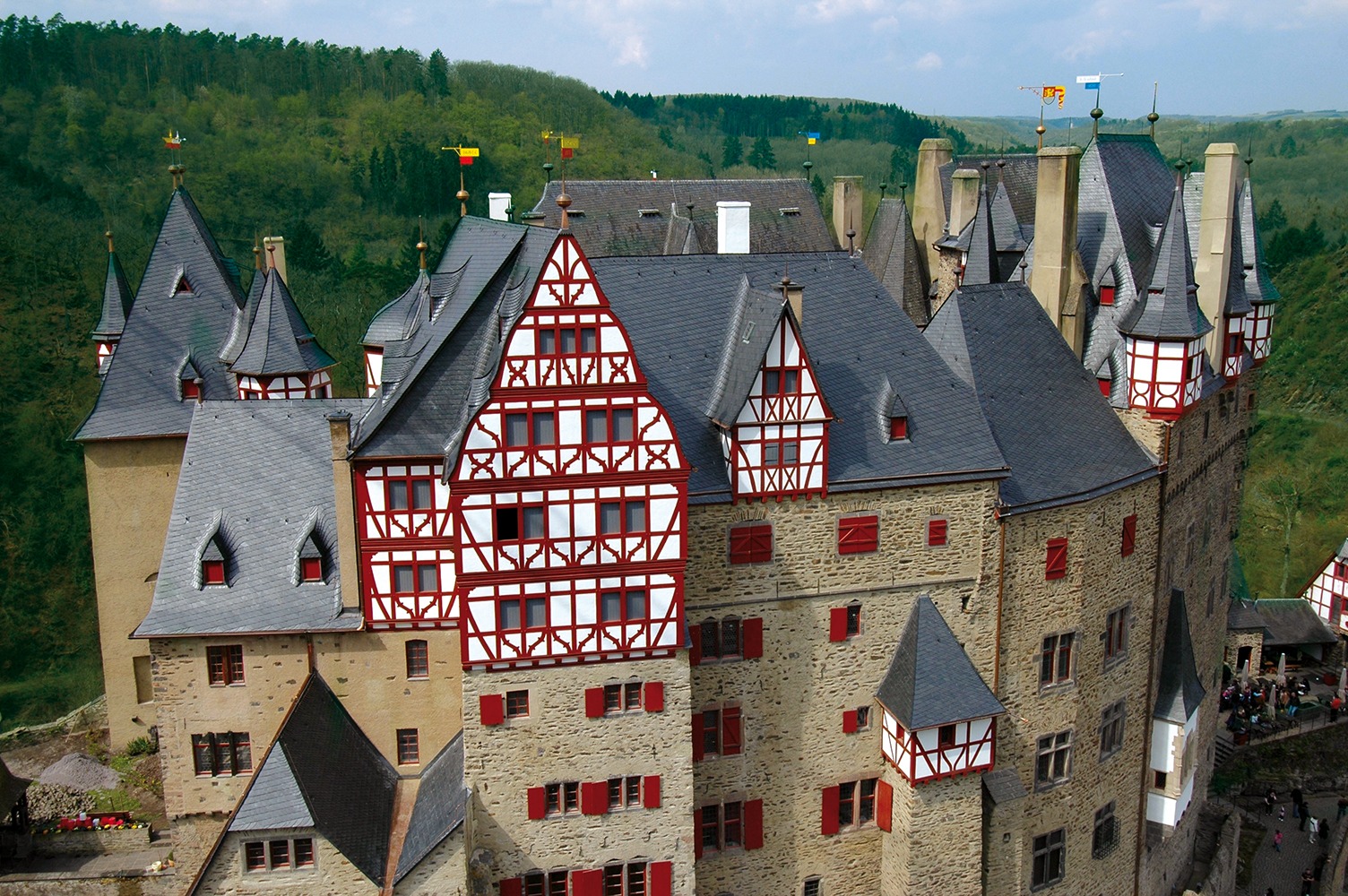
The Courtyard
The courtyard is the heart of the castle, surrounded by various wings that were built in different time periods.
The courtyard of Burg Eltz was built over 500 years, from 1150 to 1650.
It highlights how three branches of the family, totaling 180 people, lived closely together.
They lived in different sections of the castle: Klein Rodendorf, Grob Rodendorf, Rubenach, Platteltz, and Kempenich, each representing a different area around the courtyard.
The Armouny
During the Romantic Period, the entrance to Rubenach House was turned into an armory.
It holds some of the oldest surviving cannon bolts in the world, along with swords, halberds, shields, bows, arrows, and muskets from the 14th to 17th centuries.
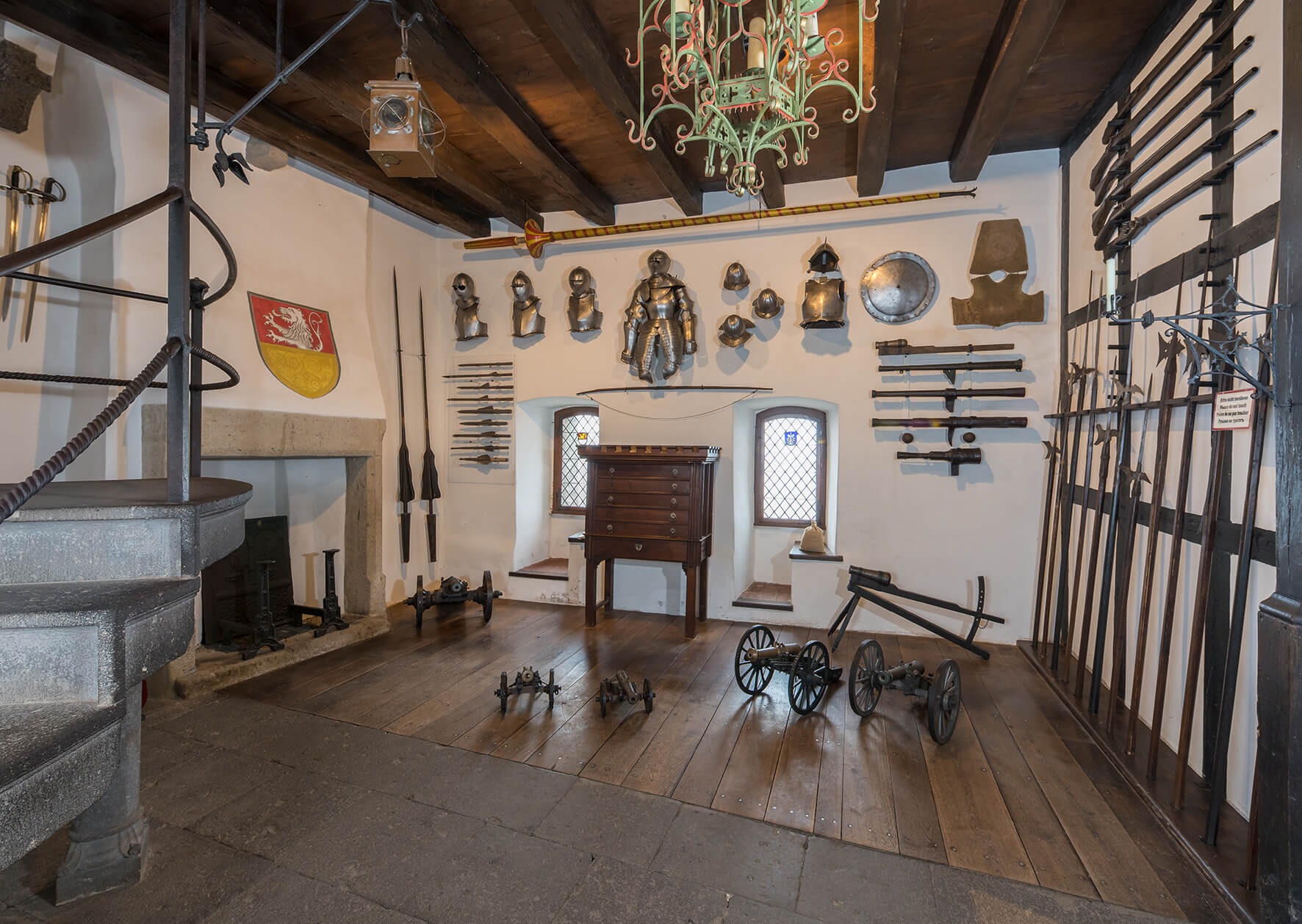
The Rubenarch Lower Hall
This room was the living space for the Altz-Rubenach family.
Built in 1311, it features the famous painting “Madonna with Child and Grapes,” a masterpiece by Lucas Cranach the Elder.
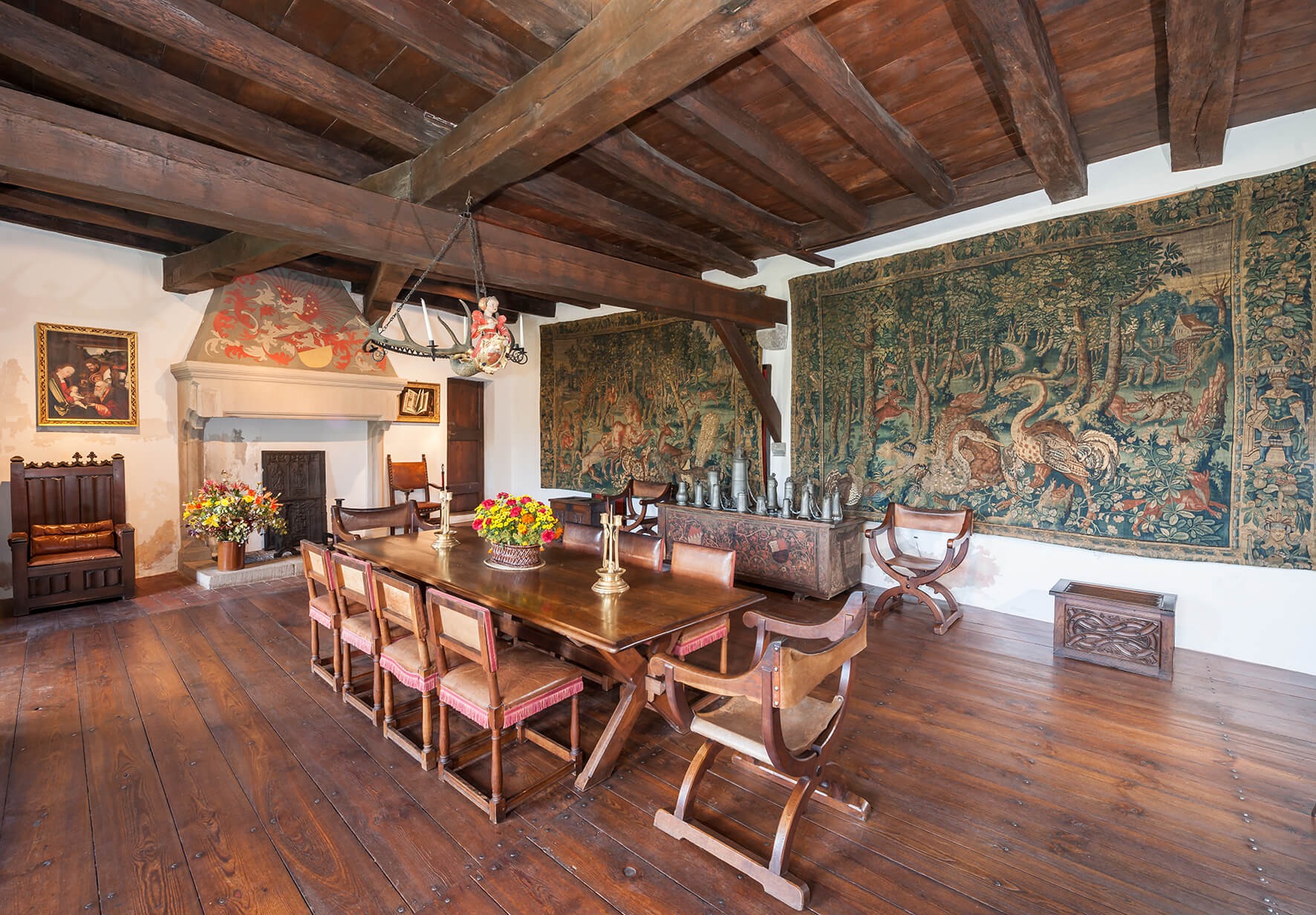
The Rubenarch Upper Hall or Bed Chamber
This spacious living area is decorated with ornamental murals from 1450 by a Burgundy artist.
It is also called the Bed Chamber because of the large, carved four-poster bed in the room.
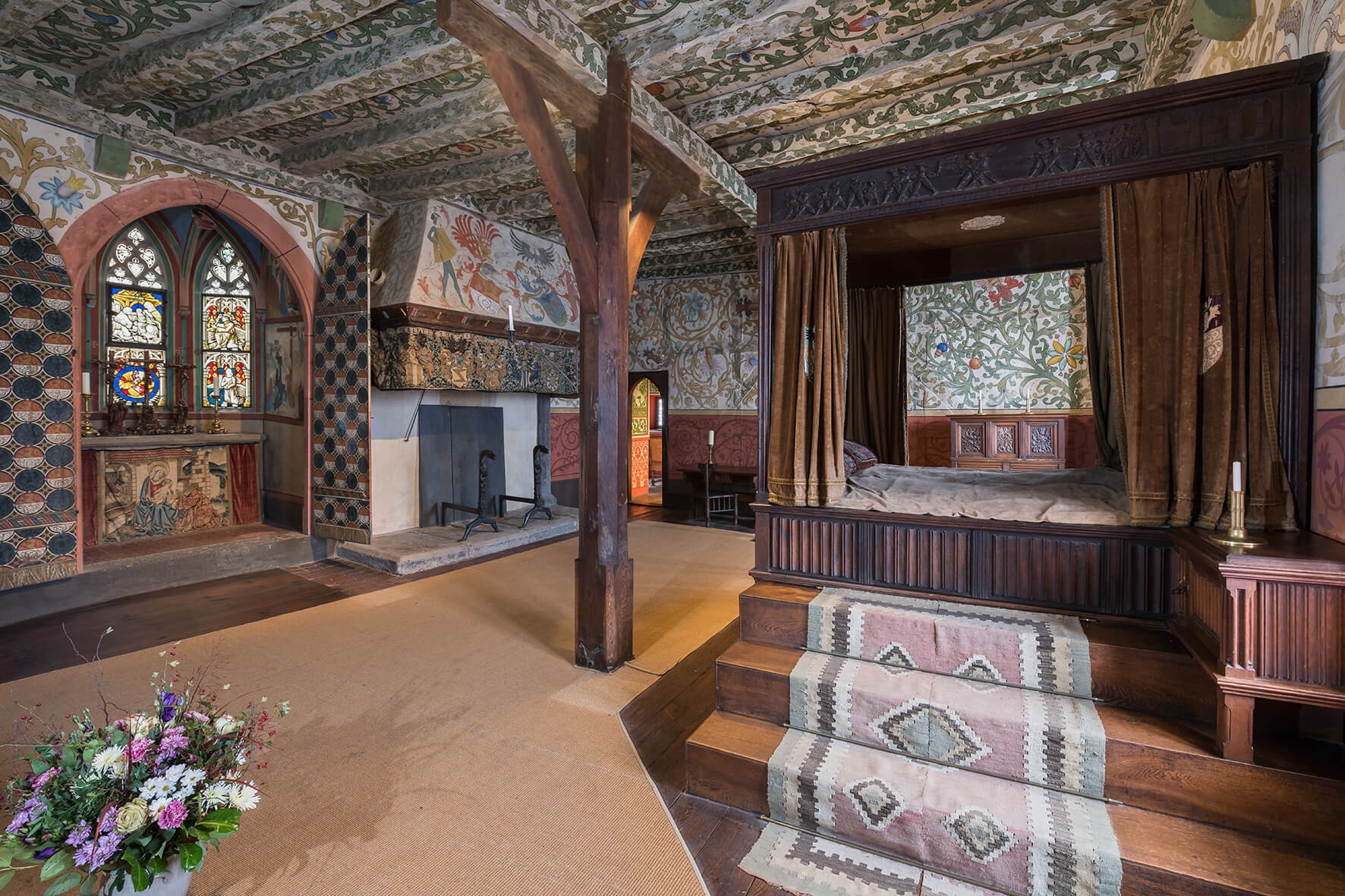
Chapel Oriel In Bed Chamber
The east wall of the Bed Chamber features a small Gothic chapel window with leaded glass from 1520.
The windows show the Eltz donors.

Dressing Room
The Dressing Room, next to the Bed Chamber, is decorated with 15th-century murals.
It features floral designs and images, including Jutta and Lanzalot of Eltz with the Silver Lion, and is dated 1451.
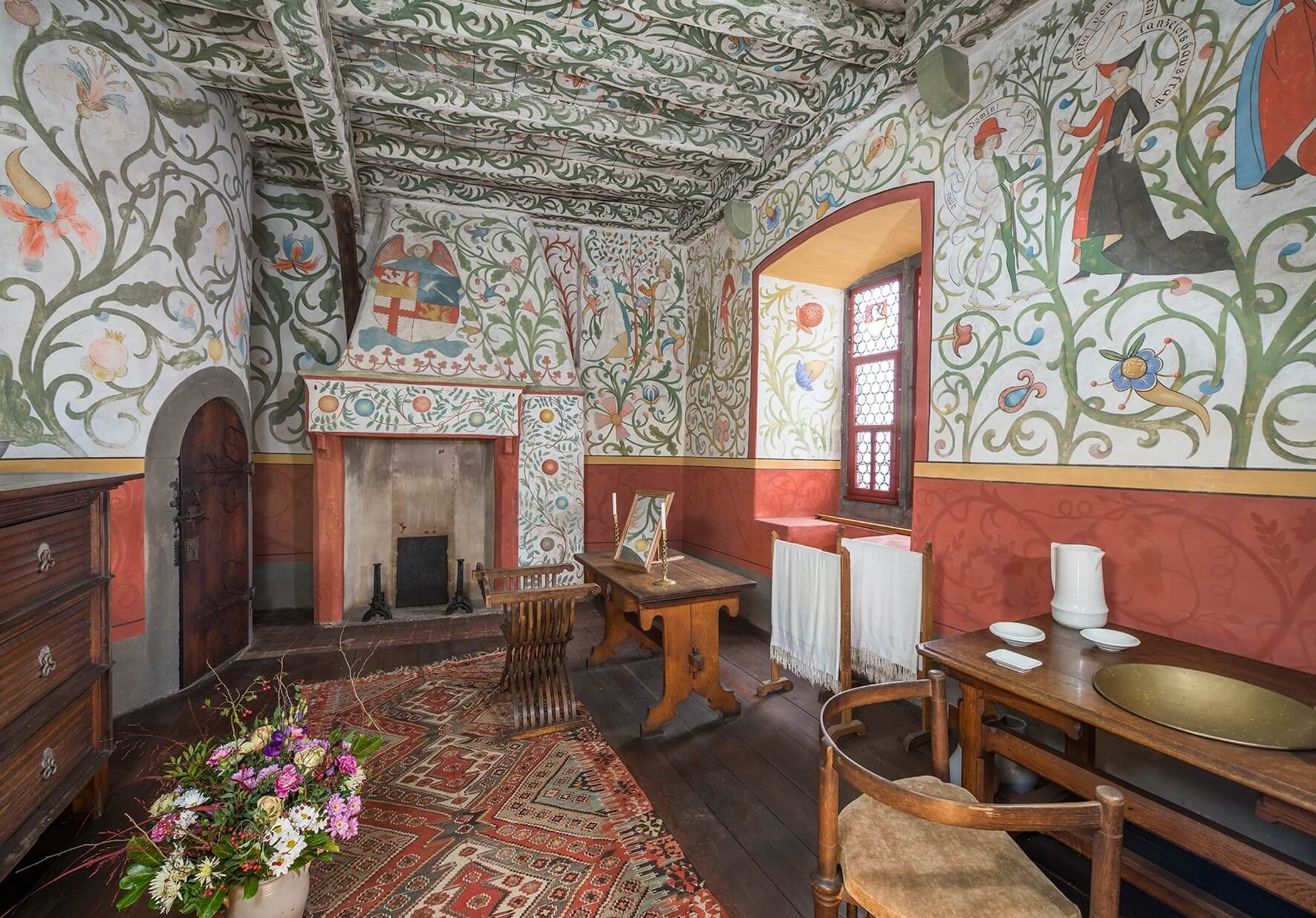
The Study
In 1881, Count Karl decorated the room above the Rubenach entrance as a special space for his wife Ludwine.
The murals show Late-Gothic vines framing portraits of himself, his two sons, and his six daughters in Romantic poses.
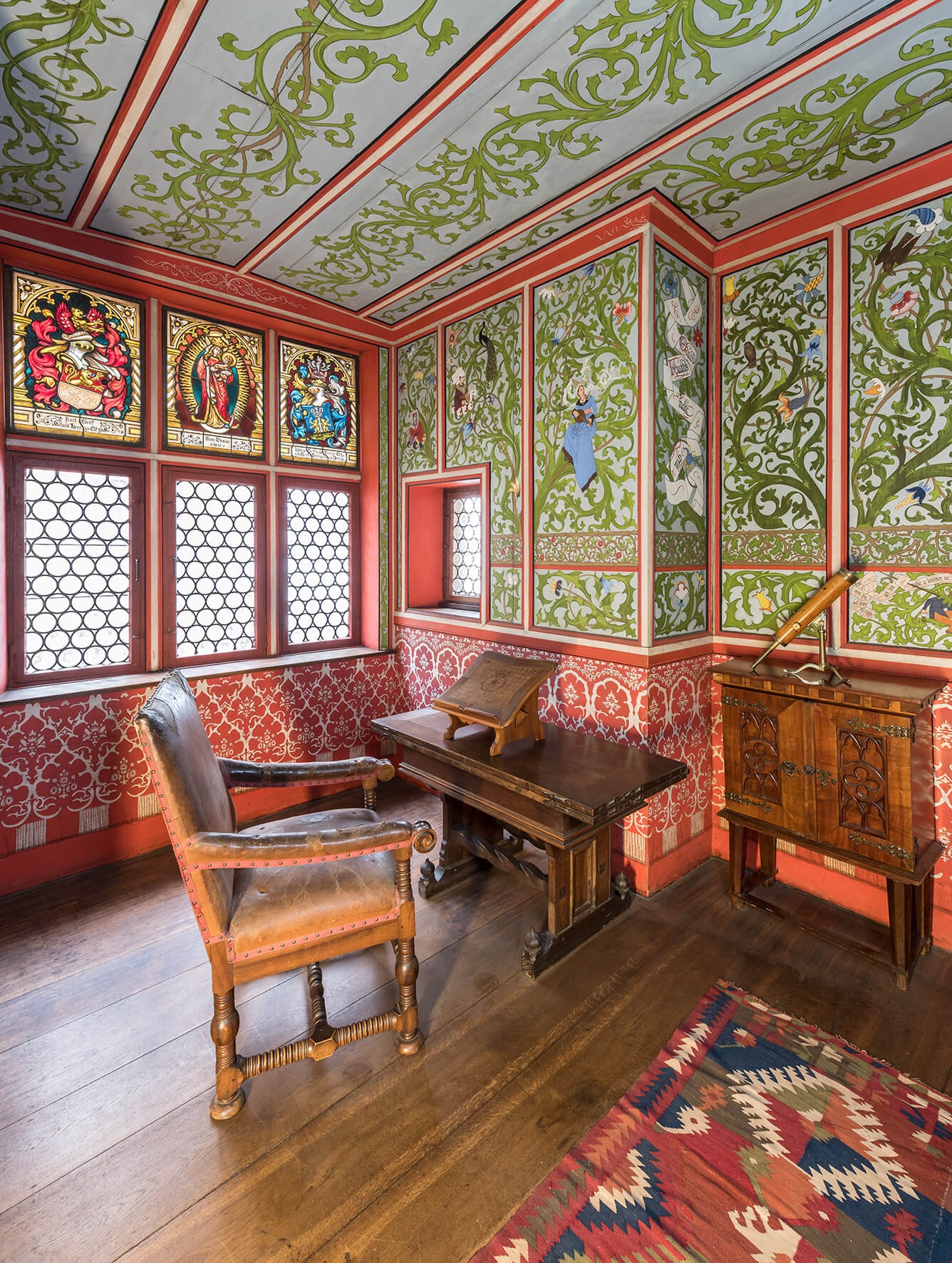
Prince’s Elector’s Room
This room is named after two Electors from the Eltz family: Jakob zu Eltz of Trier (1567-1581) and Philipp Carl zu Eltz of Mainz (1732-1743).
Its original decorations show the style changes from the 17th and 18th centuries.
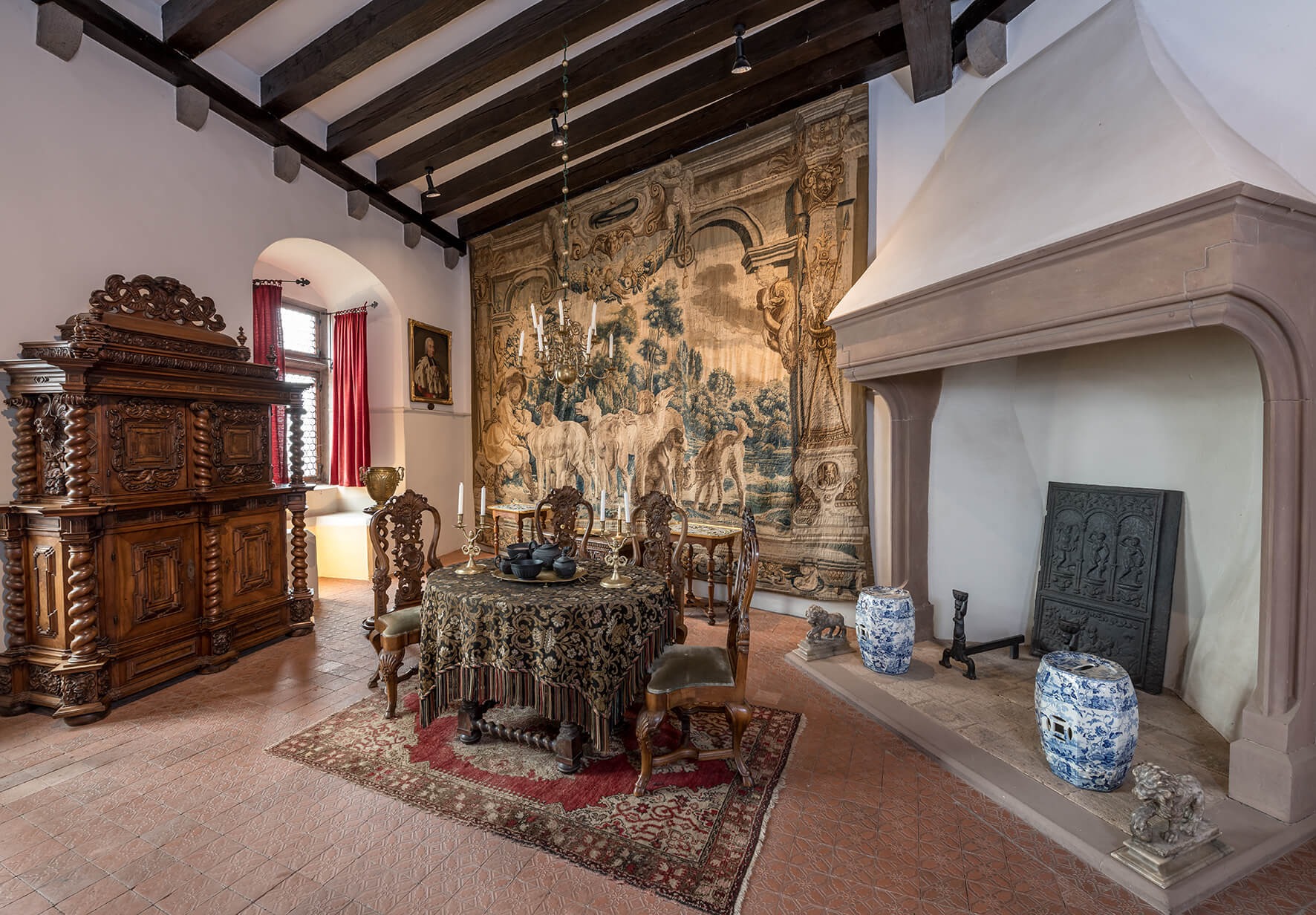
The Knight’s Hall
It was used for meetings and celebrations and as a meeting hall by all three branches of the family on Eltz Castle.
It was decorated with paintings and armor from the 16th century.
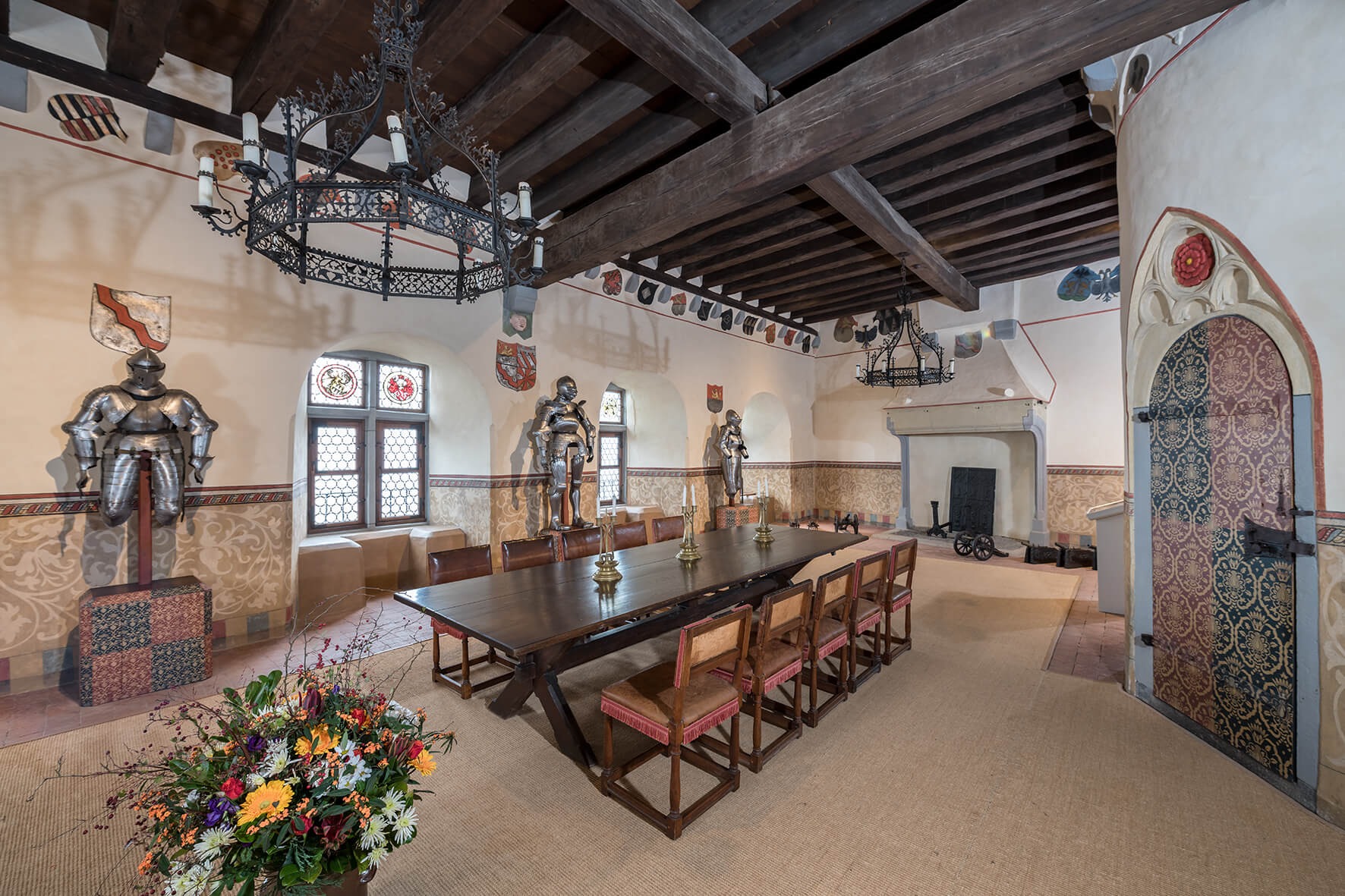
The Angel or Hunting Room

The Wambolt Room
The room was named after the family of Count Karl’s mother (1823-1900).
It features beautifully carved and inlaid furniture, Dutch portraits, a tapestry from 1600, and historic household items like a clothes press, a spinning wheel, and a reel from the 17th and 18th centuries.
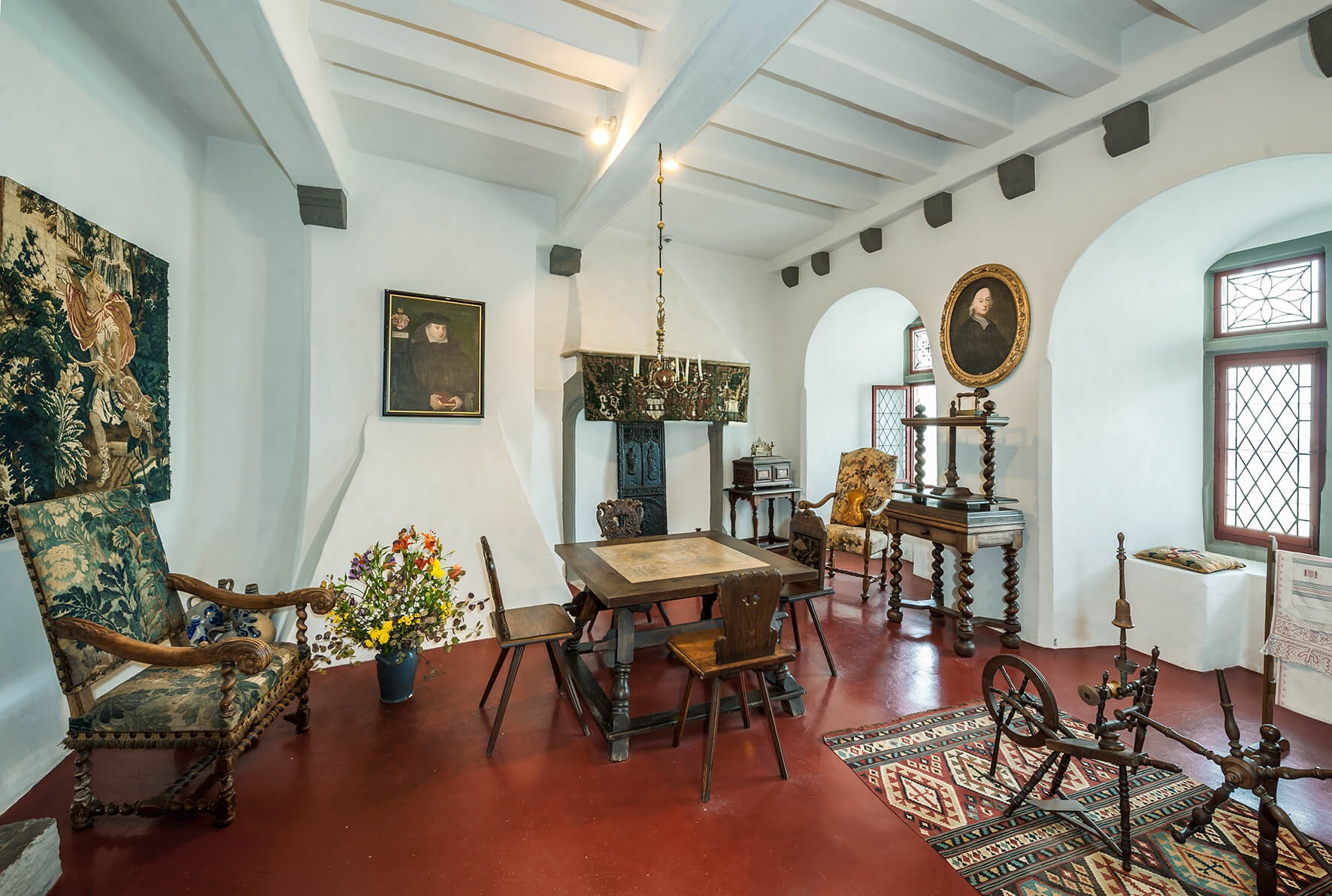
The Countess’s Room or Nursery
The Countess’ Room has one of the oldest painted Renaissance beds.
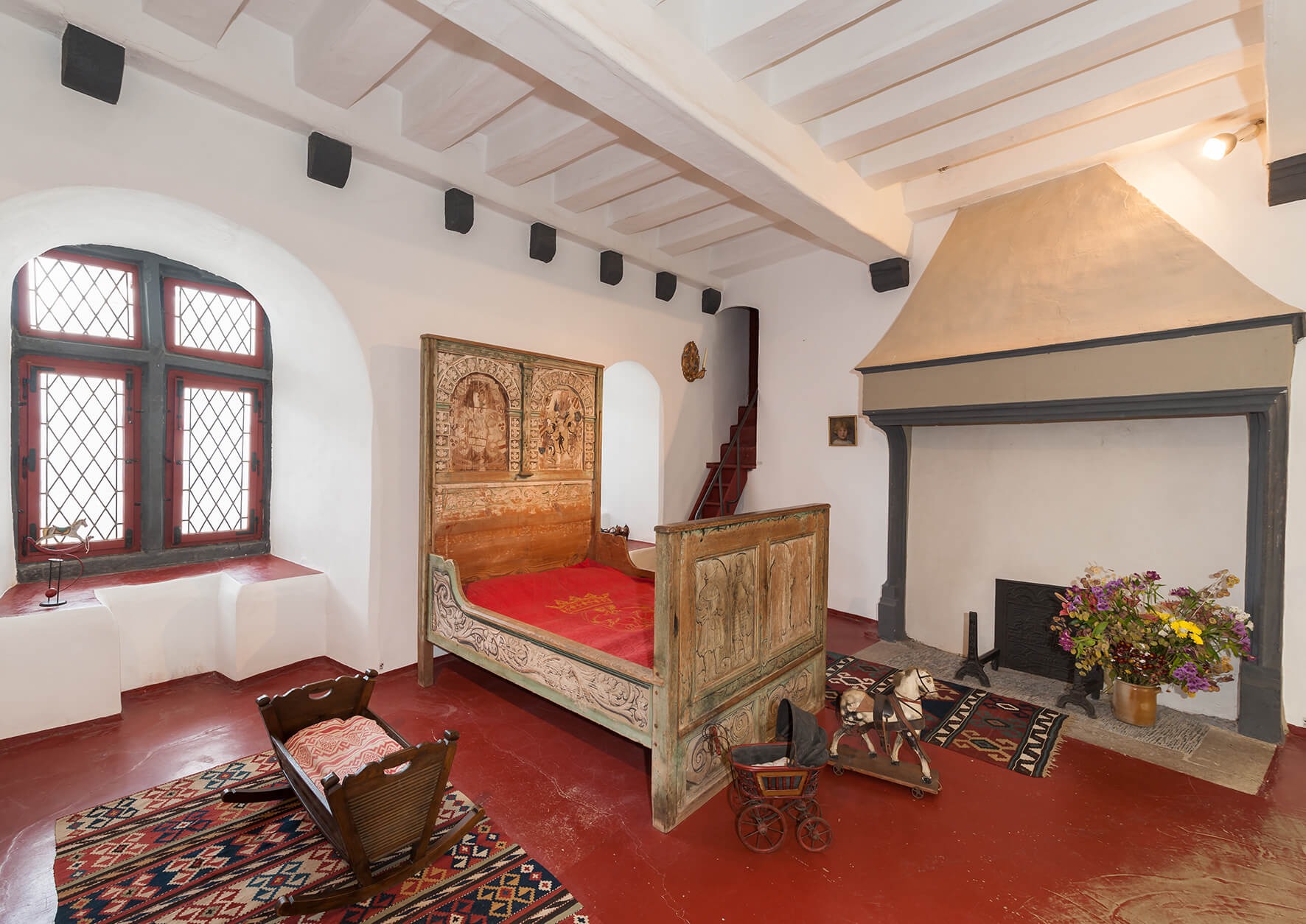
The Banner Hall
The Banner Hall was once a chapel, with its grand vaulted ceiling.
Later it was used as a living and dining room.
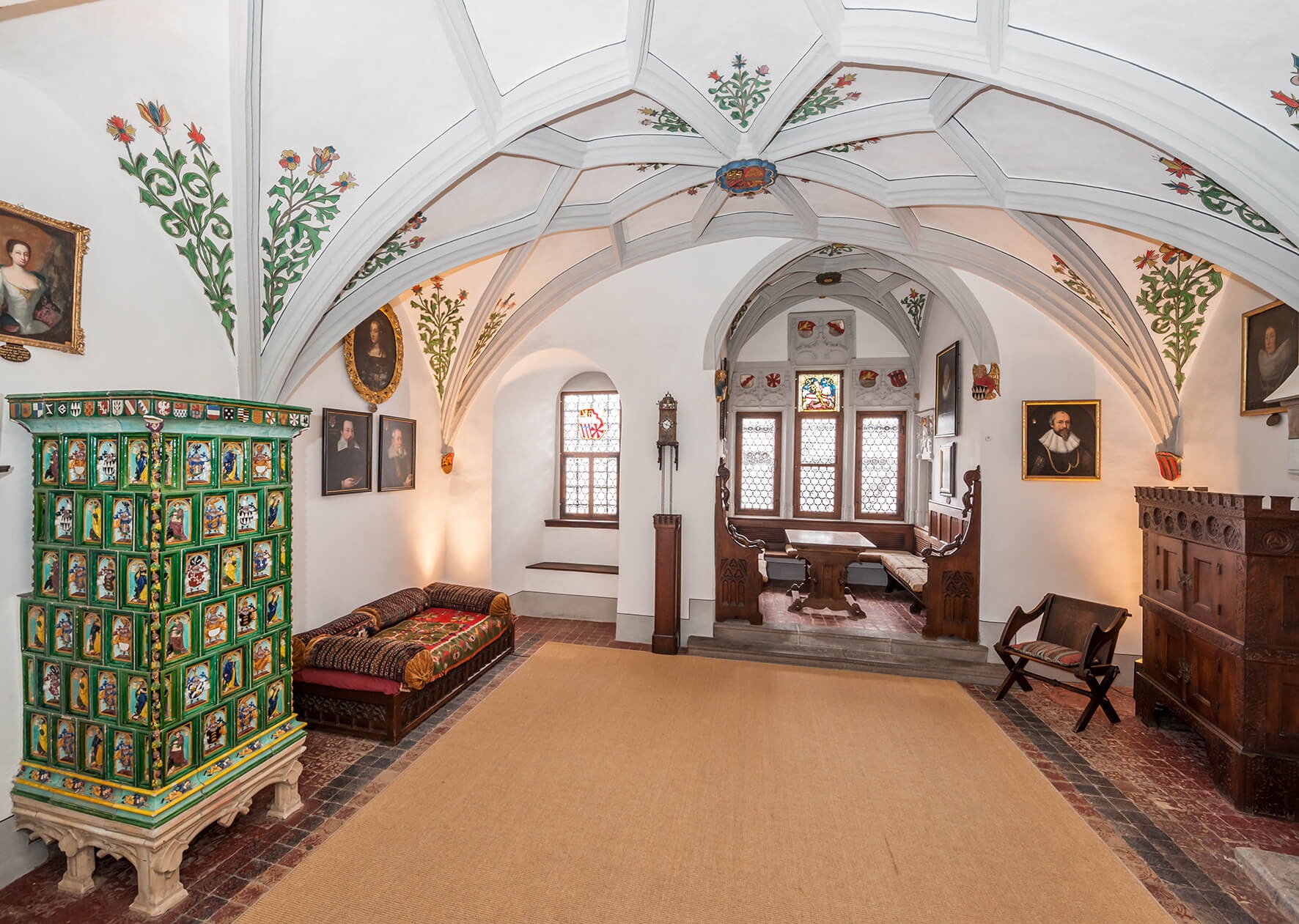
The Rodendorf Kitchen
The Rodendorf Kitchen is still filled with medieval cooking tools, some of which date back to 15 to 19th centuries.
The room also features a large fireplace that would have been the center of daily life.
